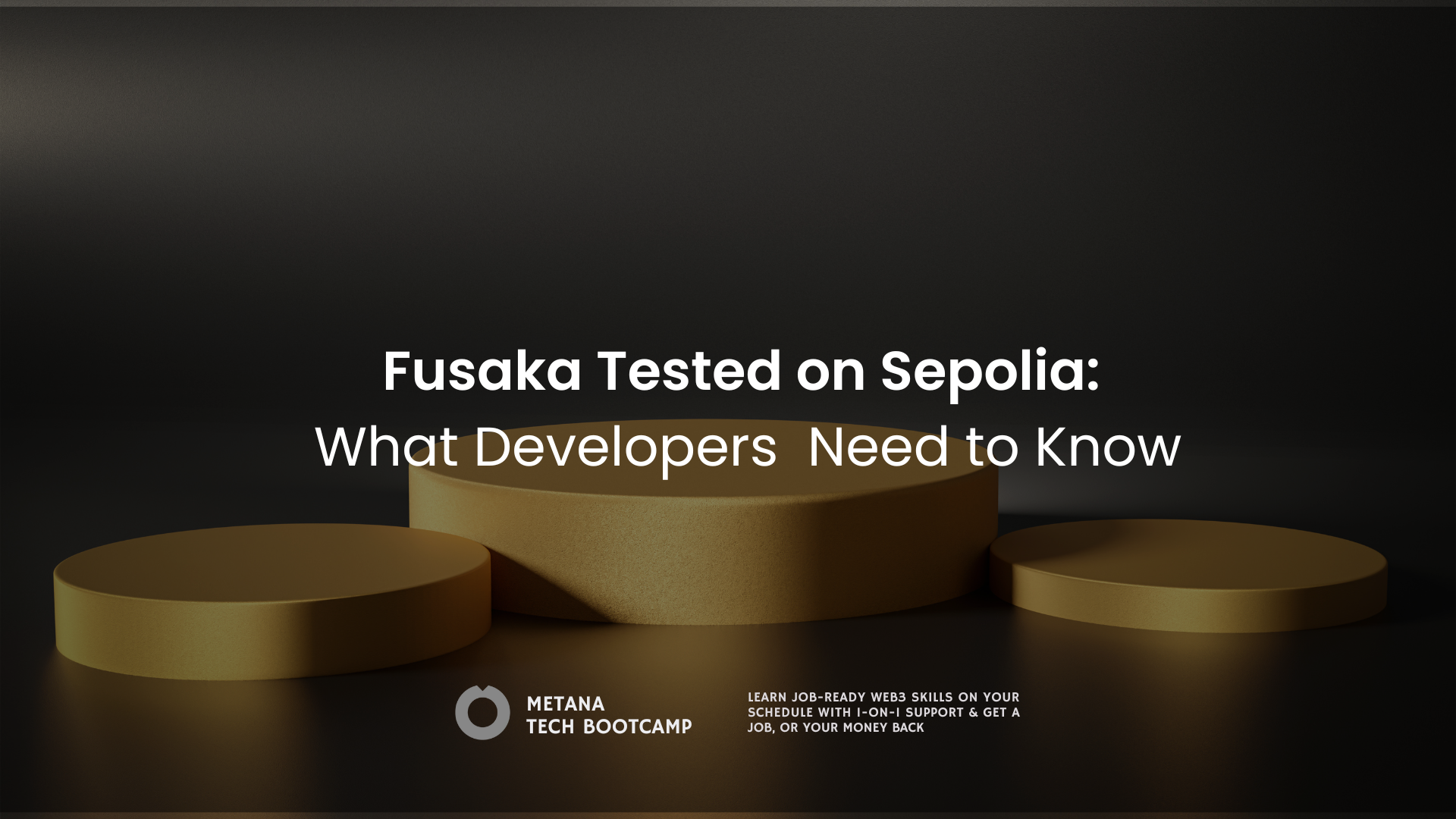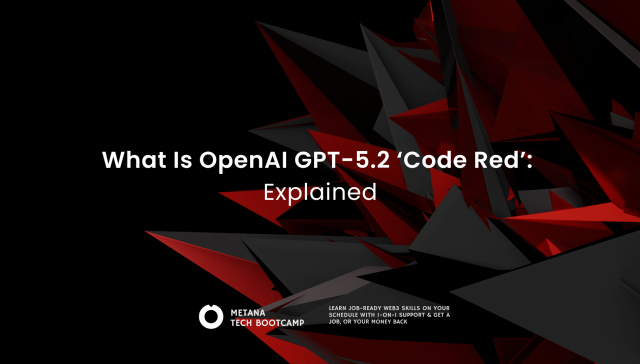TL;DR: Key Takeaways
- Fusaka launched December 3, 2025 at 21:49 UTC on Ethereum mainnet after successful testnet deployments
- PeerDAS (EIP-7594) enables 8x data capacity increase by letting validators verify only 12.5% of blob data
- Gas limit raised to 60M (from 45M) while capping individual transactions at 16.78M for security
- Layer 2 transaction costs drop dramatically as blob capacity scales from 9 to 21 through BPO forks
- Passkey support (EIP-7951) enables wallet authentication via Face ID, Touch ID, and hardware security modules
- Targeted 100,000+ TPS when combining Layer 1 and Layer 2 throughput in Ethereum’s modular architecture
Ethereum developers reached a big milestone this week. They launched the Fusaka upgrade on the Sepolia testnet, the second major test after the successful run on Holesky. Next comes the final test on Hoodi, which will pave the way for the main network launch. If you are wondering what is changing and why it matters, here is the full story.
What Is the Fusaka Upgrade?
Missed the Fusaka network upgrade?
— Ethereum (@ethereum) December 4, 2025
13 Ethereum Improvement Proposals (EIPs) are now live on Mainnet.
Here’s Fusaka in 35 seconds. pic.twitter.com/DlUh1ATA55
Fusaka is a major Ethereum network upgrade that increases the block gas limit from 45 million to 150 million, enabling the network to process significantly more transactions and smart contracts per block.
At its core, the upgrade introduces two game-changing technologies: PeerDAS and Verkle Trees.
The name combines “Fulu” (consensus layer, named after a star) and “Osaka” (execution layer, named after the Japanese city hosting Devcon 2025). This coordinated hard fork introduces approximately 13 Ethereum Improvement Proposals focused on scaling Layer 2 rollups, improving network efficiency, and enhancing user experience.
Successfully activated on mainnet December 3, 2025, Fusaka fundamentally transforms how Ethereum handles data availability and network capacity.
Why Fusaka Matters?
Ethereum processes the majority of its transactions through Layer 2 networks like Arbitrum, Optimism, and Base. These rollups bundle thousands of transactions off-chain, then post compressed data back to Ethereum mainnet in temporary storage containers called “blobs.”
Before Fusaka, every validator had to download and verify complete blobs, creating a bottleneck. As rollup adoption exploded, this model became unsustainable. Fusaka solves this problem through intelligent data sampling, enabling Ethereum to handle significantly more rollup data without forcing validators onto expensive hardware.
Key Technologies Used in Ethereum’s Fusaka
PeerDAS (Peer Data Availability Sampling)
PeerDAS (Peer Data Availability Sampling) forms the centerpiece of Fusaka. Instead of downloading entire blobs, validators now verify random portions through erasure coding and cryptographic sampling.
How it Works?
Blob data gets split into smaller cells and distributed across the network. Each validator downloads approximately 12.5% of the data (1/8th of total blob content). Using mathematical proofs, the network can cryptographically guarantee complete data availability even though no single node stores everything.
This solution delivers multiple benefits:
- Bandwidth reduction: Validators need far less network capacity
- Storage efficiency: Individual nodes store only their assigned data samples
- Scalability path: Network can theoretically scale to 8x current blob capacity
- Decentralization: Home validators can continue operating without data center infrastructure
Verkle Trees
Verkle Trees compress data proofs into smaller, faster-to-check pieces, making the whole system more efficient.
Gas Limit Changes
Fusaka coordinates two critical gas limit adjustments that work together:
- Block Gas Limit Increase (EIP-7935): The maximum gas limit per block goes up from 45 million to about 60 million. Research shows it could safely go even higher in the future (up to 150 million). This increase means each block can fit more transactions and more complex smart-contract actions.
- Transaction Gas Cap (EIP-7825): A single transaction can now use only up to 16.78 million gas. This stops any one transaction from taking over an entire block. It’s a safety measure that helps prevent denial-of-service attacks as Ethereum grows.
When did Fusaka activate on mainnet?
Fusaka launched December 3, 2025 at 21:49:11 UTC (epoch 411392, slot 13,164,544).

Testing and Deployment Timeline
Ethereum’s upgrade process demonstrated the network’s commitment to safety:
- September 2024: Initial devnet testing
- October 1, 2025: Holesky testnet activation (slot 5,283,840)
- October 15, 2025: Sepolia testnet activation
- October 28, 2025: Hoodi testnet activation (final pre-mainnet test)
- December 3, 2025: Mainnet launched (epoch 411392, 21:49:11 UTC)
The Hoodi testnet proved particularly valuable as its configuration closely mirrors mainnet conditions, providing the most realistic stress testing before live deployment.
What are the Core Benefits of the Fusaka Upgrade?
1. Efficiency and Cost Reduction
Streamlined Validator Workload:
Fusaka reduces the amount of data validators need to process and verify, making block validation more lightweight.
Lower Operational Costs:
This optimization directly reduces hardware and bandwidth costs for validators and Layer-2 operators.
2. Institutional Appeal
Scalable Infrastructure Advantage:
By lowering the cost and complexity of running validator infrastructure, Ethereum becomes more appealing to institutional users managing nodes or staking operations at scale.
Operational Flexibility:
Enterprises can maintain or expand participation in the network without heavy infrastructure upgrades.
3. Technical Improvements
12 Major Code Updates:
Fusaka introduces a dozen significant code-level changes aimed at improving scalability and network performance.
Layer-2 Optimization:
Transaction costs on Layer-2 rollups are reduced, promoting faster and cheaper scaling solutions.
4. Security and Stability
No Compromise on Security:
Despite cutting infrastructure demands, the upgrade maintains Ethereum’s strong security guarantees.
Balanced Ecosystem Growth:
The combination of efficiency and safety makes Fusaka a win-win for both individual validators and the broader Ethereum ecosystem.
What Comes Next After Ethereum’s Fusaka: Glamsterdam
With Fusaka successfully deployed, Ethereum moves into its next roadmap phase. Glamsterdam, expected in 2026, will build on Fusaka’s foundation with:
- Parallel transaction processing for higher throughput
- Further danksharding optimizations
- MEV (Maximal Extractable Value) fairness improvements
- Continued node operation simplification
The broader Ethereum roadmap continues through distinct phases:
- The Surge: Ongoing rollup scaling improvements
- The Verge: Lighter client requirements through Verkle trees
- The Purge: Historical data expiry and reduced storage burdens
- The Splurge: Everything else (quality of life improvements)
Why Did They Test It on Sepolia First?
Here’s how Ethereum actually works: they don’t just roll out upgrades and hope for the best. They test everything on multiple testnets before touching mainnet where real money lives. That’s where Sepolia testnet comes in.
The Sepolia launch has given developers another chance to see how Fusaka performs. Coming just two weeks after Holesky’s successful test, Sepolia reinforced confidence that the upgrade is stable.
Developers got to watch how the system behaves, spot any issues, and make sure everything works as planned before it ever touches the main blockchain.
Bottom Line
Fusaka is a major step forward for Ethereum. It introduces new technologies like PeerDAS and BPO forks to expand network capacity and support over 100,000+ transactions per second. The upgrade shows Ethereum can scale safely while keeping decentralization and security intact.
For developers, validators, and users, it means cheaper, faster, and smoother transactions. Fusaka also sets the groundwork for future upgrades and the next generation of Web3 applications.
If you need Sepolia ETH to test your own smart contracts or dApps, you can get it directly from Metana Sepolia ETH Faucet, your go-to source for reliable Sepolia faucet access.
Frequently Asked Questions
What is Fusaka Ethereum upgrade?
Fusaka is a major Ethereum upgrade that increases the block gas limit from 45 million to 150 million. It introduces PeerDAS and Verkle Trees technologies that allow validators to verify data more efficiently, reducing costs and making the network faster and cheaper to operate.
When did Fusaka activate on mainnet?
Fusaka launched December 3, 2025 at 21:49:11 UTC (epoch 411392, slot 13,164,544).
How will Fusaka reduce transaction fees?
Fusaka increases Ethereum’s block capacity to 150 million gas, allowing more transactions to fit into each block. This reduces competition in the fee market and lowers transaction costs, especially during network congestion. Layer 2 networks also benefit from cheaper data posting costs.
What is PeerDAS in Fusaka?
PeerDAS (Peer Data Availability Sampling) is a technology in Fusaka that allows validators to verify only small portions of data instead of downloading and verifying entire data blocks. This significantly reduces bandwidth demands and validator costs.
Why did Ethereum test Fusaka on Sepolia testnet?
Sepolia is a reliable testnet environment where developers can validate Fusaka’s performance under real-world conditions before deployment on mainnet. Testing on testnets catches issues early and ensures the upgrade is stable before it affects real users and money.
What is Hoodi testnet and why is it important?
Hoodi is Ethereum’s newest testnet built to closely mirror mainnet conditions. It was the final testing ground for Fusaka because its environment and parameters align with the main network, making stress tests far more representative of real-world performance after mainnet activation.
Do I need to update my wallet?
Most users don’t need to take any action. Wallet providers handle client updates automatically. However, if you run your own node, you must upgrade to Fusaka-compatible client software.








